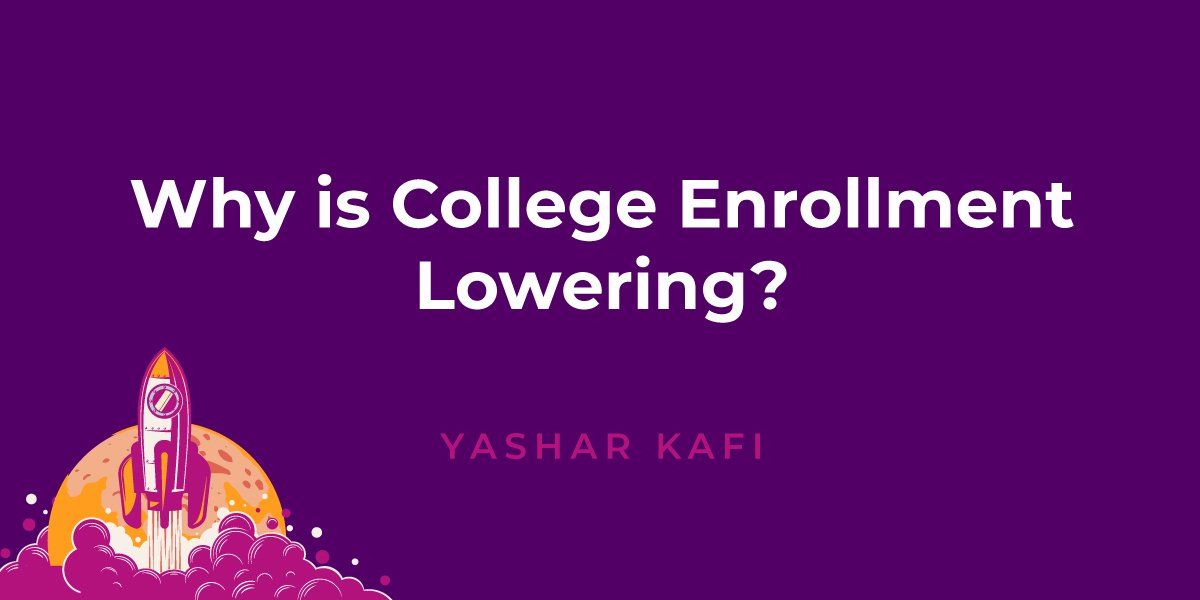Why is College Enrollment Lowering?
Less high-school graduates are enrolling in college. And believe it or not, this is a pattern that has been developing since 2012, where fewer scholars seem interested—or able—to take their studies to the next level. But it’s really when the pandemic hit last year— kicking students offcampus and out of the dorms—that we saw a nosedive in enrollment in both undergraduate and graduate programs.
The actual stats are staggering, with the one-year window from 2019 to 2020 seeing a 3% drop in enrollment, according to the National Clearinghouse Research Center. Also, according to these experts, the coming year will probably be even worse.
Why now? Let’s explore some of the numerous reasons would-be students are saying so long instead of signing up.
Lack of Jobs
College students graduating and heading into the world today face a job market that seems woefully misnamed—where exactly are the jobs?
Data shows that the class of 2021 (which consists of an estimated four million would-be college grads) will spread their wings and fly smack into what feels like a brick wall. Case in point: The current job market has lost 8.4 million jobs between February 2020 and March 2021.
Not to pile on, but there’s even more data from a UCLA study showing that individuals who graduate college during a recession (like now) are likely to earn 10%-20% less in their lifetime than their peers. And according to the Federal Reserve, things don’t look good on the job market front either, with the experts providing hard numbers that show recent college graduates (40.3%) are underemployed. The data also shows it’s just getting worse (higher unemployment rates) with each graduating class.
More Emphasis on Career Training vs. Formal Education
The nature of the world of work is changing, being reshaped by the constant evolution of technology and constantly emerging digital innovations. The types of employment available now are also evolving, with the traditional in-office 9-5 corporate role giving way to more nontraditional opportunities.
The main point here is that we are seeing a trend in a widening of open doors providing working arrangements that are outside of the standard—from apprenticeships to trade schools and more. While career training opportunities won’t replace roles requiring more formal education, we see a considerable rise in interest for this alternative route, especially as it offers a more practical—and far less costly—path to actual employment.
Return on Investment Too Low
With the mind-boggling price tags that higher education presents, far more would-be students are stepping back and taking a hard look at the pros and cons when weighing their options. And the top question on their lips? “Is it really worth it?” The debt of student loans. The uncertainty of job opportunities after all that time, effort, and expense.
And as the data clearly shows, more and more people are answering with an adamant “No, it’s not worth it,” deeming the return on their college investment being far too low for the price paid.
Rising Costs (Will Colleges Have to Get Cheaper to Stay Alive?)
Speaking of prices being paid, college costs are skyrocketing. Student loans are burying pupils in debt. The actual cost of higher education is staggering.
Just to give you an idea using concrete numbers, a recent survey of high school students conducted by the ECMC Group revealed the likelihood of their attending a four-year university has fallen from 71% to 53%—with rising costs of attendance being the main determining factor for their hesitancy.
Conclusion
There will be two distinctly separate and divided camps on the issue of whether college nowadays is worth the investment. Whichever side you come down on, the fact remains that if you do opt for college, you should be prepared to pay a pretty penny.




